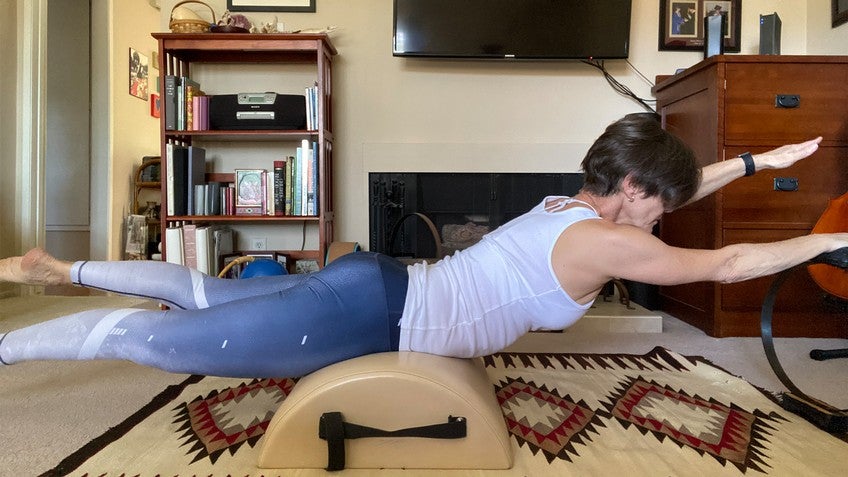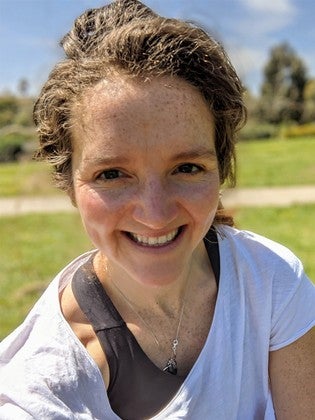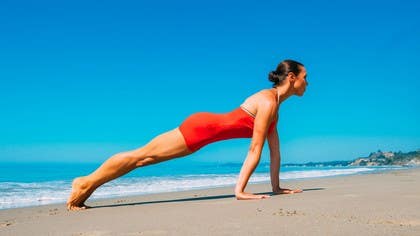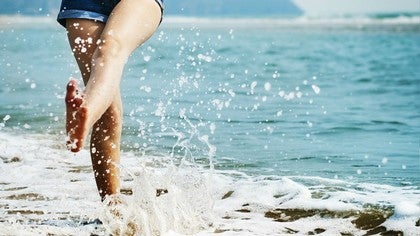
How Pilates Helps with Competitive and Recreational Swimming
When you hear the words “Pilates” and “swimming,” it’s likely you picture the Mat exercise that’s both famous and infamous for challenging the muscles of the back body. But did you know that Pilates and swimming (the kind performed in water) are mutually beneficial? Each discipline can assist with and improve performance in the other.
For many people, Pilates is a stand-alone movement modality. And why not? It challenges the body and focuses the mind. When paired with a competitive sport such as swimming, it becomes a complementary component, helping to improve strength and mobility, develop injury resiliency, and build the mindset and mental-strength skill sets that resonate far beyond the Pilates studio.
“Pilates is a fantastic way to develop the core and understand core connection,” says Phyllis Reffo, PMA®-CPT, a Pilates instructor and lead teacher trainer with Equinox Pilates in Los Angeles, California. Without the latter, “the body will not move in sync.”
Reffo credits her Pilates practice for allowing her to become the oldest National Collegiate Athletic Associations (NCAA) Division I swimmer at Pepperdine University in Malibu, California, from 2011 to 2013. And it’s allowed her to continue to participate in golf, cycling, and other sports at a high level, as well as to recover faster from injuries that might have otherwise kept her on the sidelines. “Without Pilates, I wouldn’t be walking, let alone swimming,” she says.
Pilates targets full-body muscle activation, breath, and how the two can be harnessed to facilitate effective movement patterns. A body that works as a whole unit (often referred to as “whole-body integration”) is more likely to function with ease. If you are a swimmer, you likely are already familiar with the need for proper muscle activation, ease of movement, and joint mechanics. Pilates helps you up-level your function outside the water and in the pool.
The skills honed in a Pilates practice, physical as well as mental, transfer beyond the studio. “Centering,” or working from the trunk to facilitate moving the limbs, improves performance in the water in the form of powerful limb movements initiated from a strong center. Think backstroke, breaststroke, freestyle, and kicking.
While all of the Pilates repertoire will cultivate a strong Powerhouse-to-limbs connection, some exercises are particularly useful for a swimmer’s training and longevity. Chest Expansion and Swan help maintain good cervical and thoracic mobility and can also reduce pain from being prone in the water. Rolling like a Ball helps with the body position required for flip turns, while Rowing improves shoulder mobility and strengthens the delicate rotator cuff. Other good exercises for swimmers are Pulling Straps, T-Pull, Hands in Straps, and, of course, Swimming.
Pilates can also play a role in injury resiliency by encouraging proper biomechanics, and joint and muscle cohesion. Without this synthesis, the body can recruit the wrong muscles or rely on improper mechanics to facilitate movement. These patterns can result in overuse injuries that are common in swimmers, such as rotator cuff problems, pain in the thoracic spine and scapulae, or misalignment of the hips and pelvis.
In addition to the physical payoffs, Pilates cultivates the mindset, mental strength, and mind-body connection that are critical for elite athletes. The focus on the breath facilitates a calm mental state as well as lowered levels of cortisol, the stress hormone. Pilates demands intense focus and a sense of “going inward,” as does competitive swimming, particularly on race days.
If you have never tried swimming, but have spent some time in the Pilates studio, you are already familiar with the gentle, no-impact nature of Pilates, something that is very similar in the water. What you may be surprised by however, is how well you can move through the water and how easily the sport flows through your body, thanks to your Pilates experience.
Reffo suggests starting your swimming practice with one session a week of swimming laps. Think about your Pilates principles as you swim. You might even hear your Pilates instructor’s voice in your head as you do your laps. Some helpful cues from Pilates that can inform your water workouts include:
- Are you engaging the Powerhouse and moving from the center?
- Can you create space across your chest and keep your shoulders depressed (away from your earlobes)?
- Are your spine and pelvis neutral or are they anteriorly tilted, popping out of the water above?
- Are there strokes that require a sense of “drawing towards the midline?”
While it may take a bit of practice to feel comfortable in the water, with time, you will be as proficient in the pool as you are on the Reformer. In the process, you will create a practice of two contrasting but complimentary movement modalities for your body. Best of all, these complementary practices can last a lifetime.
Have you discovered that Pilates helps your swimming, or vice versa? Let us know about your experience in the comments below.
Comments


You need to be a subscriber to post a comment.
Please Log In or Create an Account to start your free trial.















